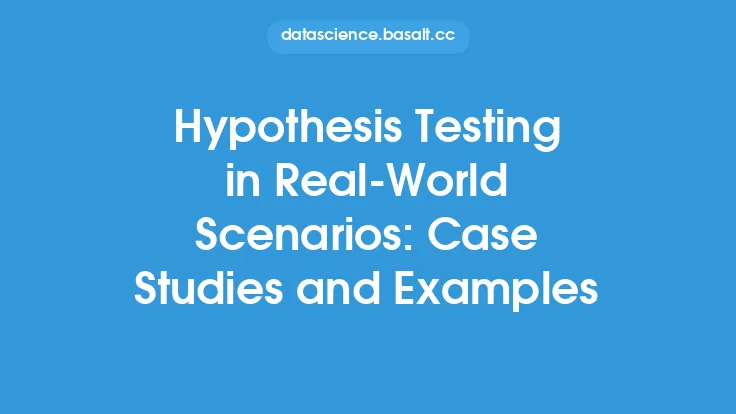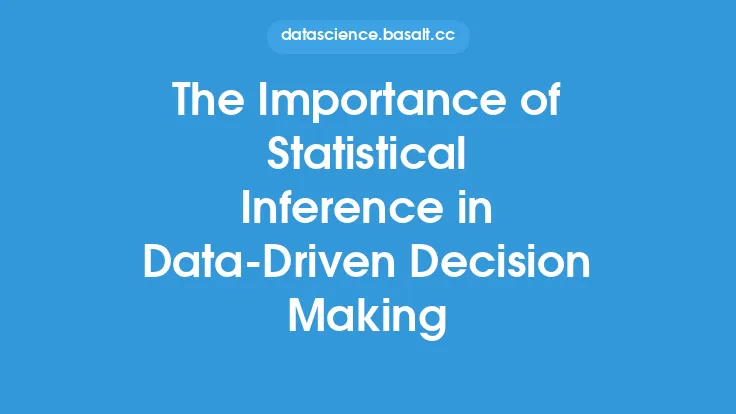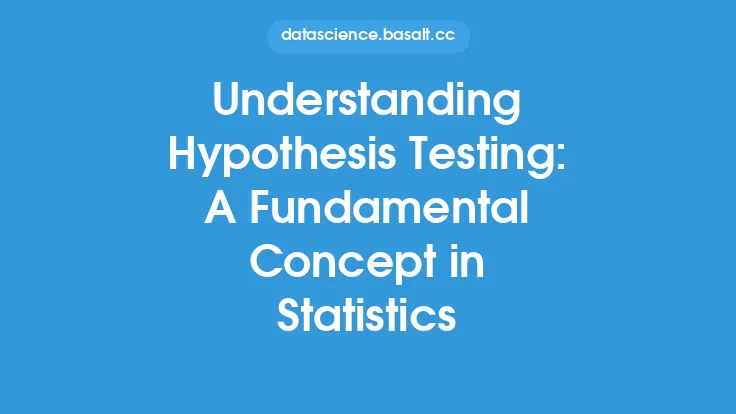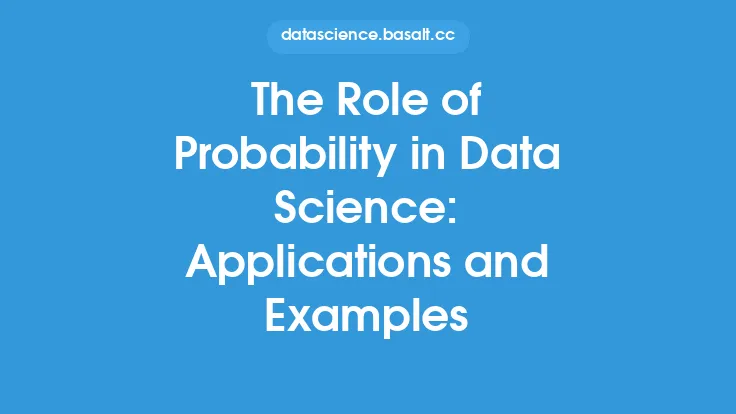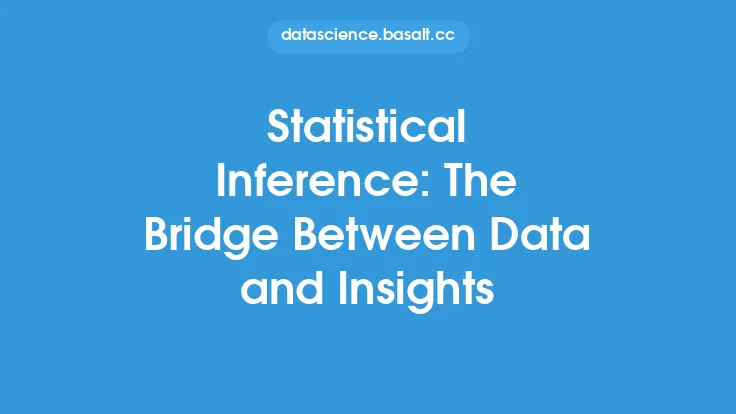Hypothesis testing is a crucial aspect of statistical analysis, allowing researchers to make informed decisions based on data. At its core, hypothesis testing involves formulating a hypothesis, collecting data, and then using statistical methods to determine whether the data supports or rejects the hypothesis. In this article, we will delve into the power of hypothesis testing, focusing on interpreting results and making informed decisions.
Introduction to Hypothesis Testing
Hypothesis testing is a statistical technique used to test a hypothesis about a population based on a sample of data. It involves formulating a null hypothesis (H0) and an alternative hypothesis (H1), collecting data, and then using statistical methods to determine whether the data supports or rejects the null hypothesis. The null hypothesis typically represents a statement of no effect or no difference, while the alternative hypothesis represents a statement of an effect or difference.
Interpreting Test Statistics and P-Values
When conducting a hypothesis test, researchers typically calculate a test statistic and a p-value. The test statistic is a numerical value that measures the strength of the evidence against the null hypothesis, while the p-value represents the probability of observing a test statistic at least as extreme as the one observed, assuming that the null hypothesis is true. A small p-value (typically less than 0.05) indicates that the data provides strong evidence against the null hypothesis, leading to its rejection. In contrast, a large p-value indicates that the data does not provide sufficient evidence to reject the null hypothesis.
Understanding Confidence Intervals
Confidence intervals are another important aspect of hypothesis testing, providing a range of values within which the true population parameter is likely to lie. A confidence interval is constructed by calculating the sample statistic and then adding and subtracting a margin of error, which is determined by the sample size, the standard deviation of the sample, and the desired level of confidence. Confidence intervals can be used to estimate population parameters, such as means and proportions, and can also be used to test hypotheses.
Interpreting Results in the Context of the Research Question
When interpreting the results of a hypothesis test, it is essential to consider the research question and the context in which the study was conducted. Researchers should consider the practical significance of the results, as well as the statistical significance. For example, a result may be statistically significant, but practically insignificant. In such cases, the researcher may need to consider other factors, such as the size of the effect, the cost of the intervention, and the potential benefits and risks.
Avoiding Common Mistakes in Hypothesis Testing
There are several common mistakes that researchers can make when conducting hypothesis tests, including failing to consider the assumptions of the test, ignoring the possibility of alternative explanations, and misinterpreting the results. To avoid these mistakes, researchers should carefully evaluate the assumptions of the test, consider alternative explanations for the results, and interpret the results in the context of the research question.
The Importance of Replication in Hypothesis Testing
Replication is a critical aspect of hypothesis testing, as it allows researchers to verify the results of a study and increase confidence in the findings. Replication involves repeating a study using the same methods and procedures, but with a new sample of data. If the results of the replication study are consistent with the original study, it provides strong evidence for the validity of the findings. In contrast, if the results of the replication study are inconsistent with the original study, it may indicate that the findings are not reliable.
The Role of Hypothesis Testing in Decision-Making
Hypothesis testing plays a critical role in decision-making, as it provides a systematic and objective approach to evaluating evidence and making informed decisions. By using hypothesis testing, researchers and decision-makers can evaluate the strength of the evidence for a particular claim or hypothesis, and make decisions based on the results. For example, in medicine, hypothesis testing is used to evaluate the effectiveness of new treatments, while in business, hypothesis testing is used to evaluate the effectiveness of marketing campaigns.
Advanced Topics in Hypothesis Testing
There are several advanced topics in hypothesis testing, including Bayesian hypothesis testing, non-parametric hypothesis testing, and resampling methods. Bayesian hypothesis testing involves using Bayesian methods to update the probability of a hypothesis based on new data, while non-parametric hypothesis testing involves using methods that do not require normality or other distributional assumptions. Resampling methods, such as bootstrapping and permutation tests, involve using random sampling to estimate the distribution of a test statistic.
Conclusion
In conclusion, hypothesis testing is a powerful tool for making informed decisions based on data. By understanding how to interpret test statistics and p-values, confidence intervals, and replication, researchers and decision-makers can evaluate the strength of the evidence for a particular claim or hypothesis, and make decisions based on the results. While there are several common mistakes that can be made in hypothesis testing, careful evaluation of the assumptions of the test, consideration of alternative explanations, and interpretation of the results in the context of the research question can help to avoid these mistakes. Ultimately, hypothesis testing provides a systematic and objective approach to evaluating evidence and making informed decisions, and is a critical aspect of statistical analysis.

